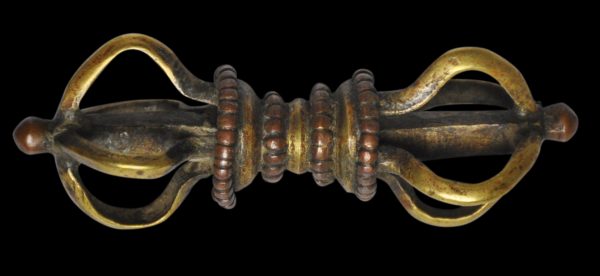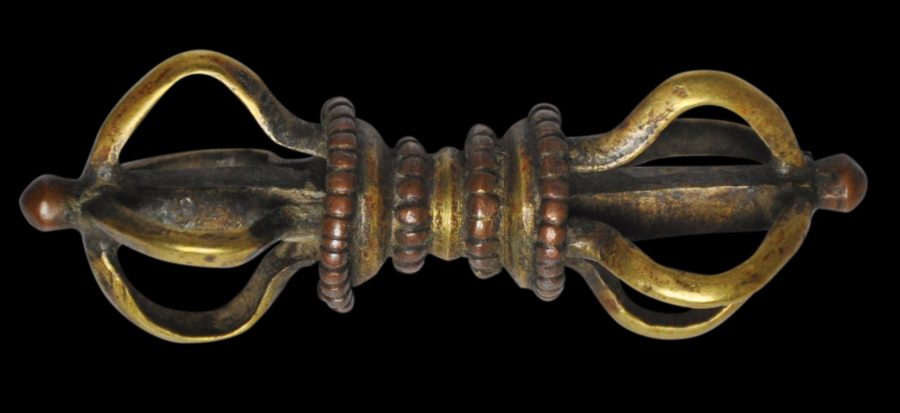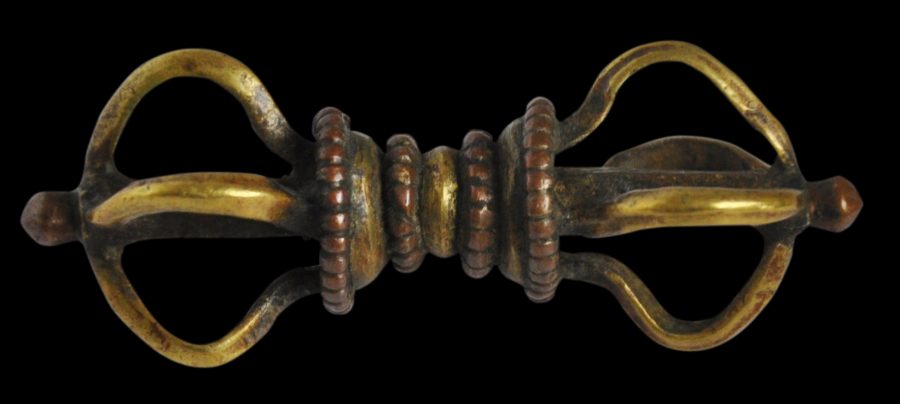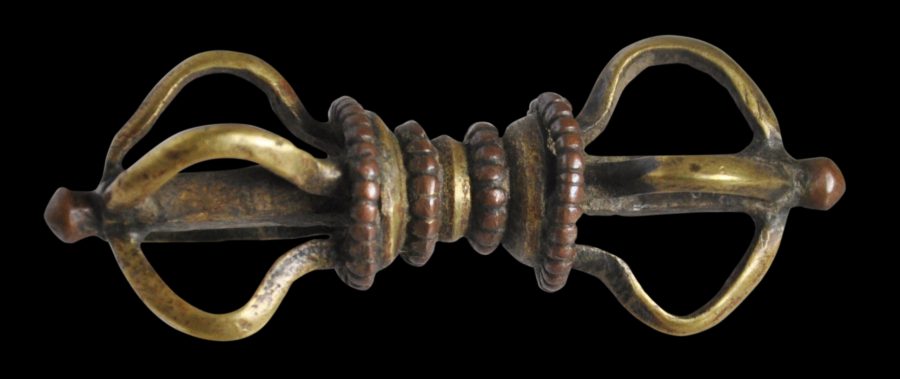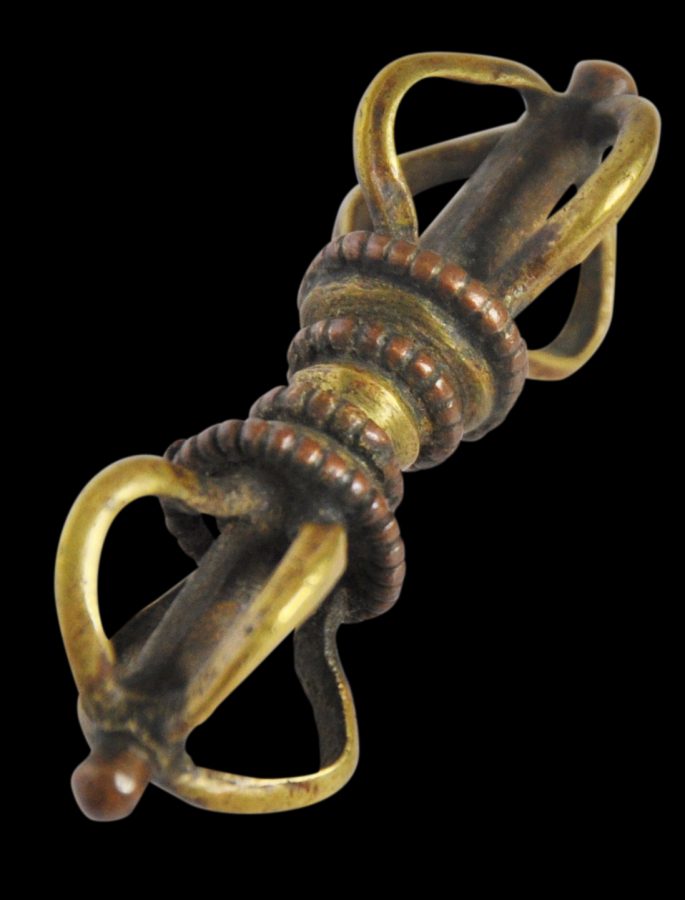This very small vajra or dorje is notable for its unusually small size, its obvious age and wear, and the fact that is it elegantly composed from both copper and brass providing a pleasing contrast between the two metals.
Both ends are made with four brass outer prongs and one central prong. The central thumb grip area is of brass with pearled copper edging.
The vajra is an important symbol in Mahayana Buddhism. Originally, the thunderbolt was a weapon of Indra from Indian Hindu legend. Indra became incorporated into Tibetan Buddhist lore as a disciple of the Buddha, and was transformed into the bodhisattva Vajrapani. The vajra emerged as the strongest weapon in the universe and became a symbol of universal compassion of enlightened beings.
Iconographically, it is sometimes said that the five prongs at one end represent the five transcendent buddhas. The five prongs at the other end represent the five female buddhas.
The example here, of dainty proportions, has superb wear, and elegant proportions.
References
Beer, R., The Encyclopedia of Tibetan Symbols and Motifs, Serindia, 2004.
Thurman, R.A. & D. Weldon, Sacred Symbols: The Ritual Art of Tibet, Sotheby’s/Rossi & Rossi,1999.


